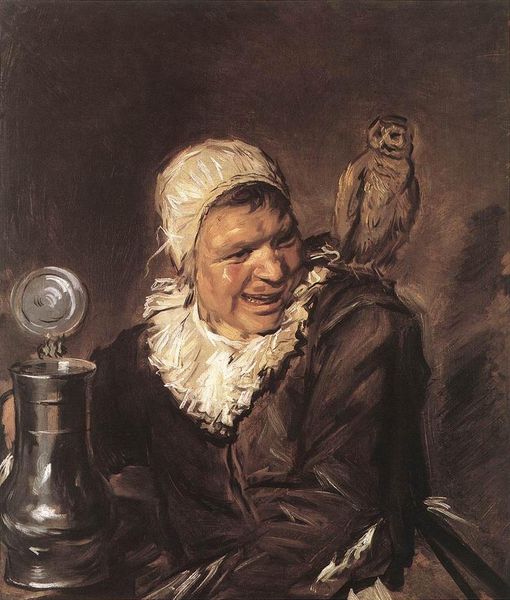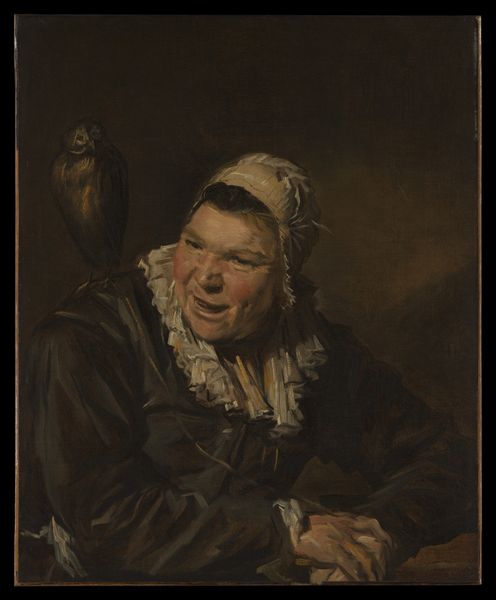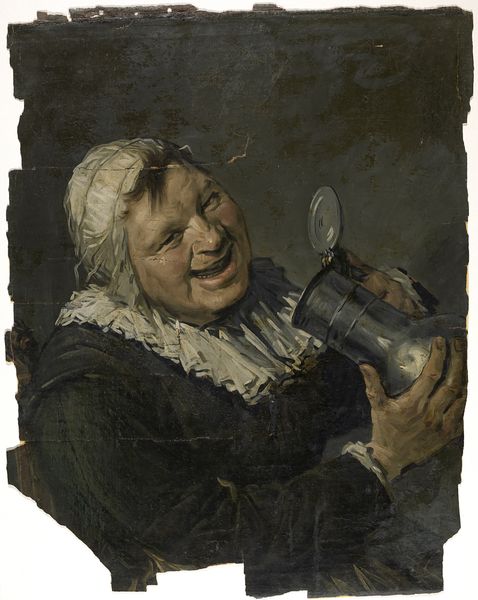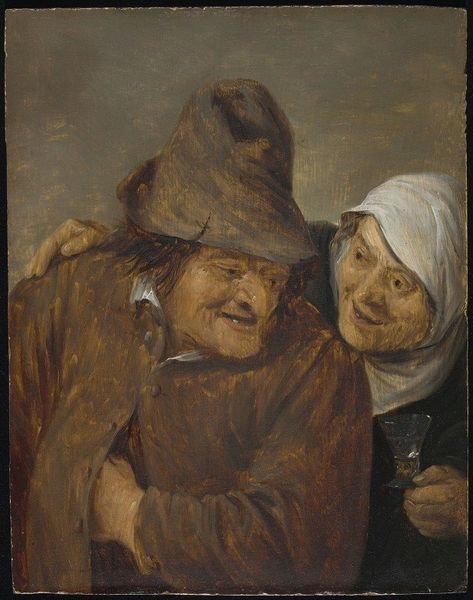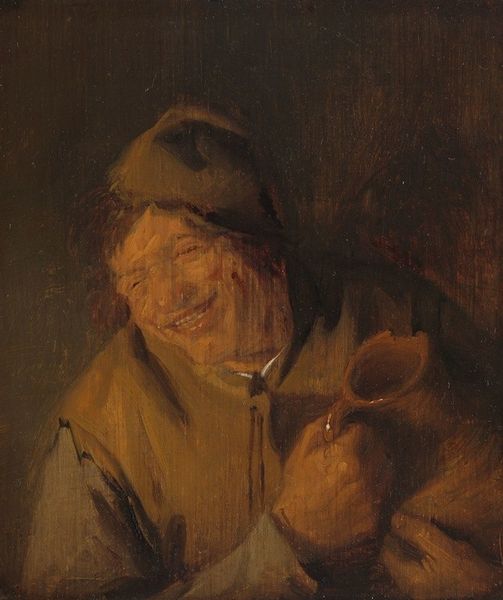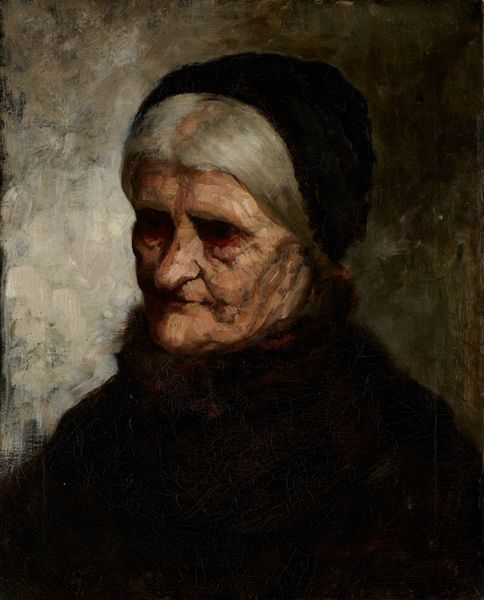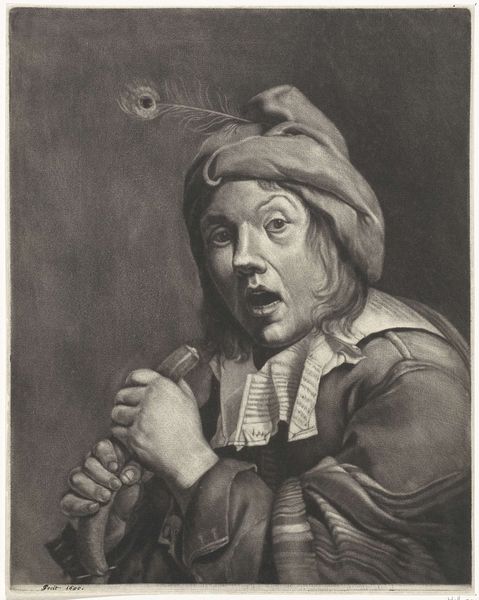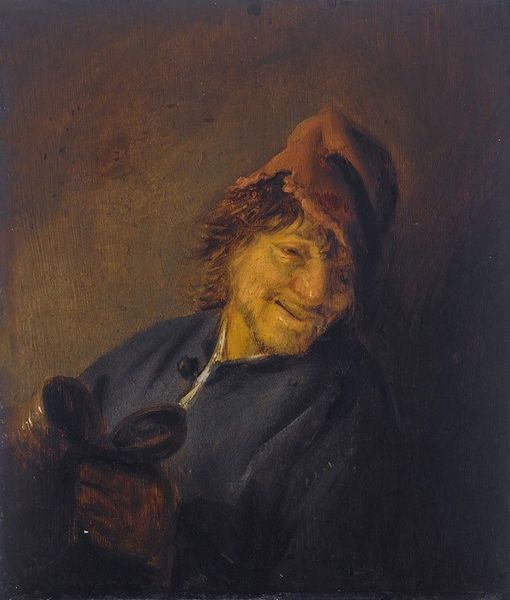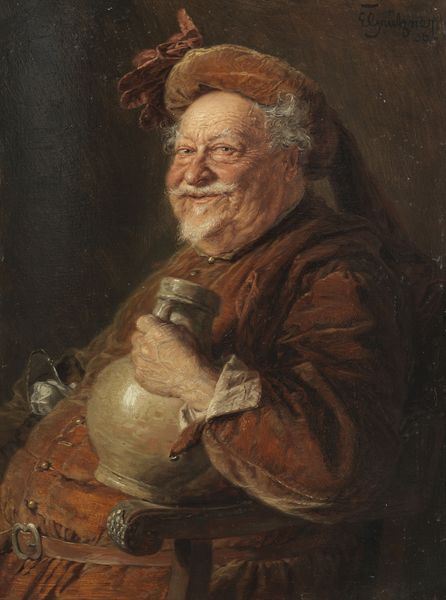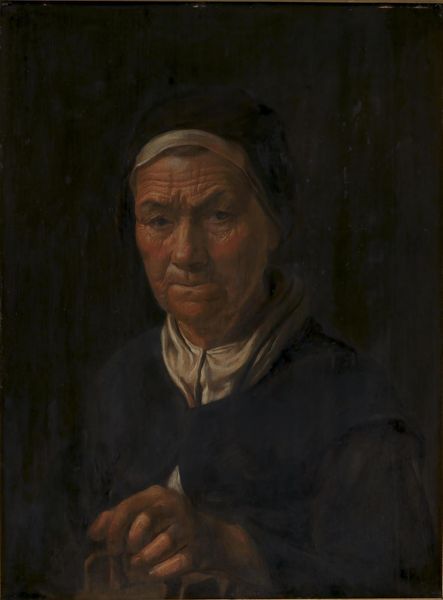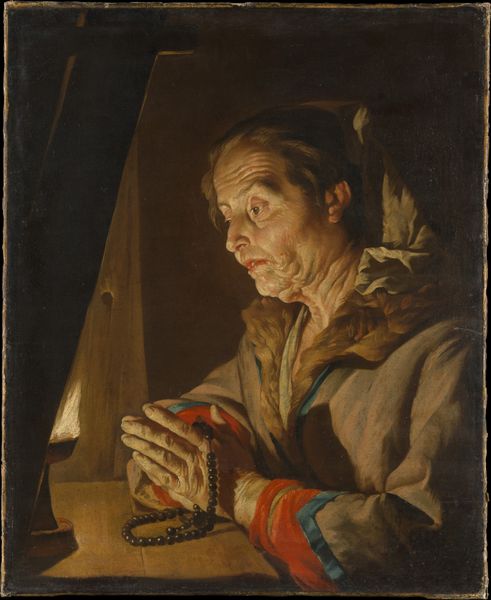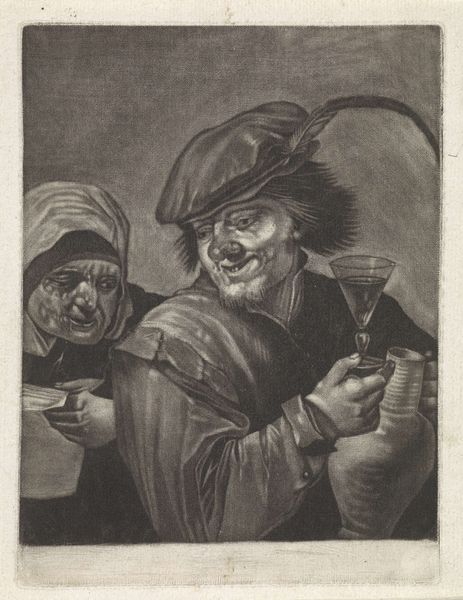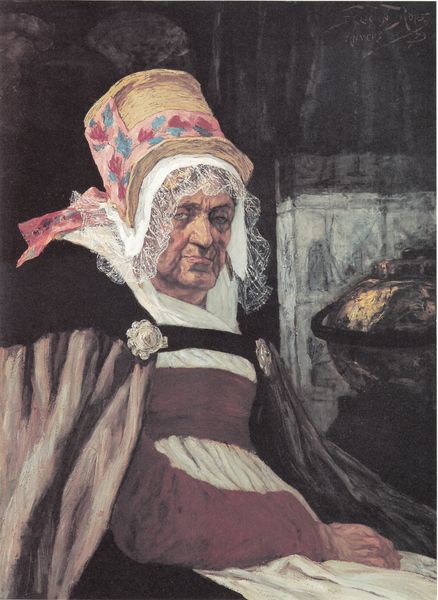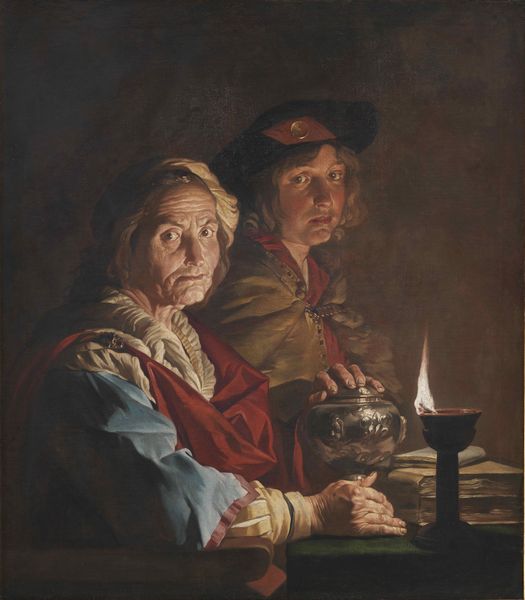
Copyright: Public domain
Gustave Courbet painted *Malle Babbe (after Hals)* using oil on canvas. The original Malle Babbe, by Frans Hals, was made in the 17th century. Courbet's copy shares some of the same techniques, but is looser and cruder. The thick application of oil paint, particularly visible in the woman's face, beer jug, and ruffled collar, adds a tangible, tactile quality to the image. You can almost feel the weight and texture of the materials. The painting process itself is crucial here. Courbet’s quick, expressive brushstrokes mirror the rough, boisterous character of Malle Babbe. This directness and immediacy was a deliberate choice, flying in the face of the polished, academic style that dominated the art world at the time. The social context is vital too. Courbet, a staunch realist, wanted to depict life as it was, including everyday folk and their experiences. The painting is a testament to the value of labor, the dignity of the working class, and the power of challenging artistic conventions. It is a reminder that art can be both a reflection of and a tool for social change.
Comments
No comments
Be the first to comment and join the conversation on the ultimate creative platform.
